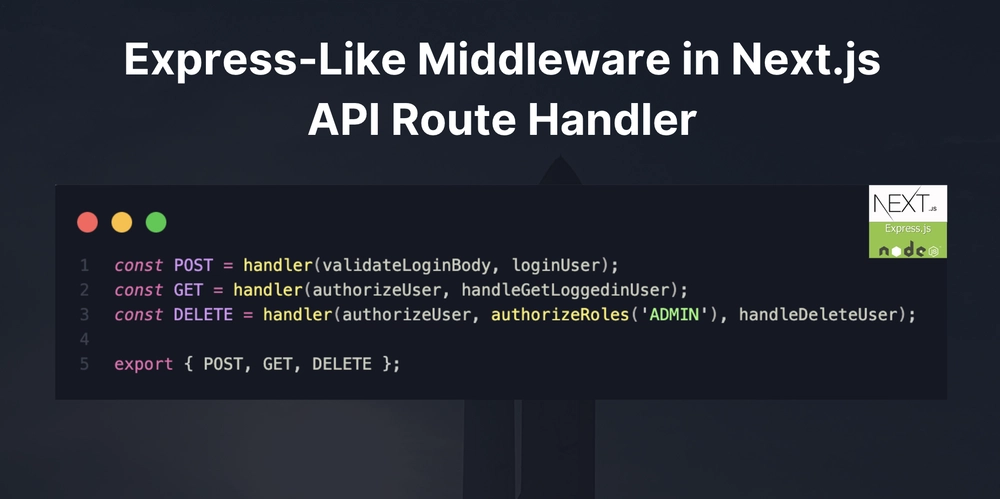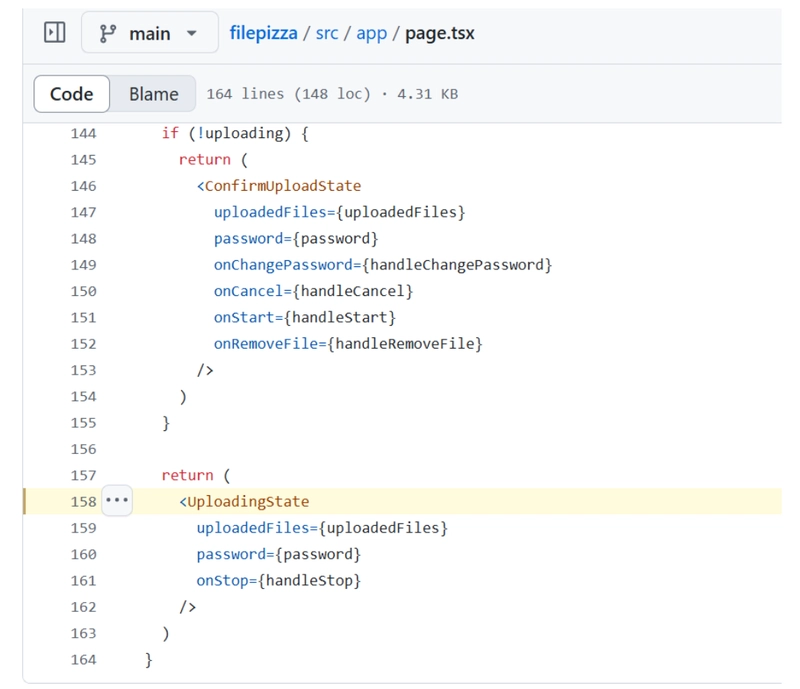Express-Like Middleware in Next.js API Route Handler
Next.js is an incredible framework. I mean it’s packed with server-side rendering (SSR), static site generation (SSG), API routes and powerful optimizations that make it one of the best choices for modern web development. But if you're coming from an Express.js background, especially when working with Nextjs API Route handlers, you might feel something’s missing - Middleware. In Express.js, middleware is at the core of request handling. It allows you to inject authentication, validation, logging, and other reusable logic before a request reaches the actual route handler. The traditional req, res, next flow makes it easy to chain multiple middleware functions together, ensuring every request passes through a structured pipeline. Next.js does provide middleware, but it works differently. Instead of the traditional Express-style approach, Next.js middleware runs at the edge before a request reaches a specific API route or page. This is called Edge Middleware and it operates at the CDN level, allowing you to modify requests and responses before they hit your application. It’s highly performant and ideal for tasks like auth redirects, A/B testing, internationalization and so on. However, Edge Middleware has some limitations; it doesn’t have access to request bodies, and you can’t use traditional Node.js APIs like fs or database queries. This means if you’re looking to implement middleware inside API routes in a way that feels like Express, you need a different approach. So, how do we bring back the flexibility of Express-like middleware inside Next.js API routes, while keeping it type-safe and developer-friendly? In this article, I'll show you how I built a flexible, type-safe middleware pattern for Next.js that brings back the best parts of Express without compromising Next.js’s strengths. If you’ve ever wished Next.js middleware worked more like Express, this is for you!

Next.js is an incredible framework. I mean it’s packed with server-side rendering (SSR), static site generation (SSG), API routes and powerful optimizations that make it one of the best choices for modern web development.
But if you're coming from an Express.js background, especially when working with Nextjs API Route handlers, you might feel something’s missing - Middleware.
In Express.js, middleware is at the core of request handling. It allows you to inject authentication, validation, logging, and other reusable logic before a request reaches the actual route handler. The traditional req, res, next flow makes it easy to chain multiple middleware functions together, ensuring every request passes through a structured pipeline.
Next.js does provide middleware, but it works differently. Instead of the traditional Express-style approach, Next.js middleware runs at the edge before a request reaches a specific API route or page. This is called Edge Middleware and it operates at the CDN level, allowing you to modify requests and responses before they hit your application. It’s highly performant and ideal for tasks like auth redirects, A/B testing, internationalization and so on.
However, Edge Middleware has some limitations; it doesn’t have access to request bodies, and you can’t use traditional Node.js APIs like fs or database queries. This means if you’re looking to implement middleware inside API routes in a way that feels like Express, you need a different approach.
So, how do we bring back the flexibility of Express-like middleware inside Next.js API routes, while keeping it type-safe and developer-friendly?
In this article, I'll show you how I built a flexible, type-safe middleware pattern for Next.js that brings back the best parts of Express without compromising Next.js’s strengths. If you’ve ever wished Next.js middleware worked more like Express, this is for you!






















































.jpg)
%20Abstract%20Background%20112024%20SOURCE%20Amazon.jpg)



















































































































![[The AI Show Episode 142]: ChatGPT’s New Image Generator, Studio Ghibli Craze and Backlash, Gemini 2.5, OpenAI Academy, 4o Updates, Vibe Marketing & xAI Acquires X](https://www.marketingaiinstitute.com/hubfs/ep%20142%20cover.png)
































































































































![From drop-out to software architect with Jason Lengstorf [Podcast #167]](https://cdn.hashnode.com/res/hashnode/image/upload/v1743796461357/f3d19cd7-e6f5-4d7c-8bfc-eb974bc8da68.png?#)




































































































.png?#)





.jpg?#)
































_Christophe_Coat_Alamy.jpg?#)










































































































![Rapidus in Talks With Apple as It Accelerates Toward 2nm Chip Production [Report]](https://www.iclarified.com/images/news/96937/96937/96937-640.jpg)










































































































































